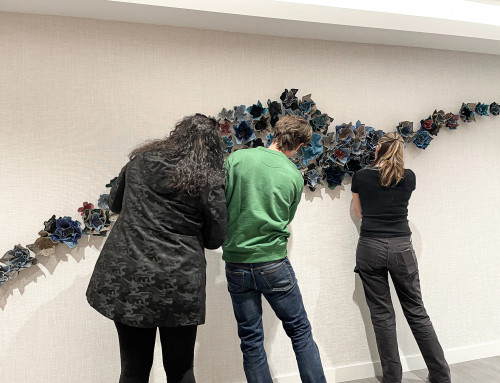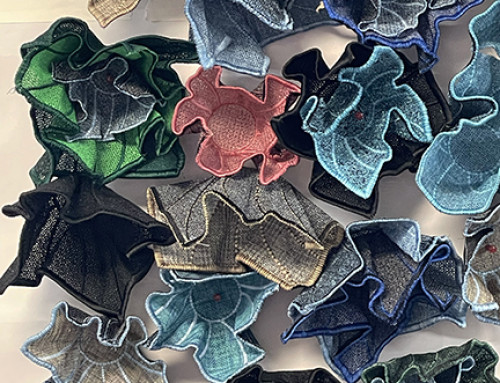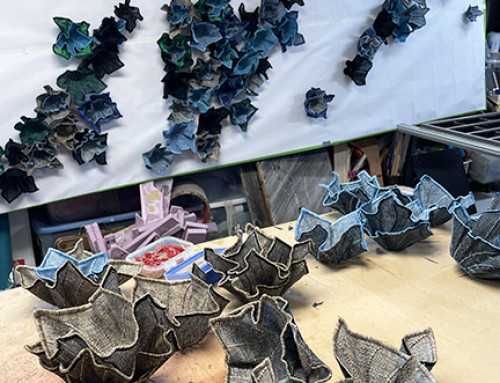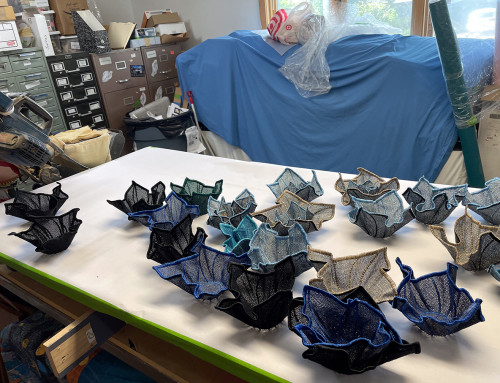Pandemic Projects: Susan Hensel Explores the Effect of Substrate Color on Finished Objects | Textile Art
FEBRUARY 26, 2021 ( Published today on the blog of the Surface Design Association.)
COLOR INTERACTIONS | Susan Hensel Projects | Textile Art
Susan Hensel is a multidisciplinary artist, with a 50+ year career, who combines a mixed media practice with embroidery across digital and manual platforms. She make sculpture and wall art using the colors and techniques of commercial embroidery, designed in the computer and stitched out on the computer-aided embroidery machine. This ongoing pandemic project is called Chromatic Book Blocks. Upon completion, there will be al least 25 modules.
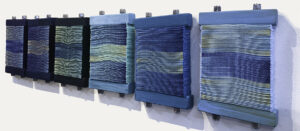
Susan Hensel Chromatic Book Blocks 2021, digital embroidery, mixed media. Photo by the artist.
How COLOR INTERACTIONS And Textile Art Started
Digital embroidery is not as automatic as it might appear. There are lots of opportunities for failure: broken needles, miscalculations, changes in humidity, and just plain chance. I keep boxes of failed stitch-outs for experimentation.
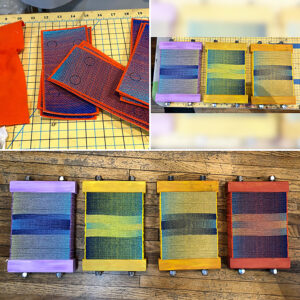
Chromatic Book Blocks image composite, 2021. Photo by the artist.
One pandemic afternoon, I got out that box. I considered all the what-if’s I could muster. What if it was upside down, sideways, folded, a different color. I was playing with a simple stitch-out that day and noticed how folding a rectangle of stitching intensified the color display. What would happen if I chose three threads? Then, I designed open gradients that remained the same from stitch out to stitch out, but changed the color of the substrate? One thing led to another…
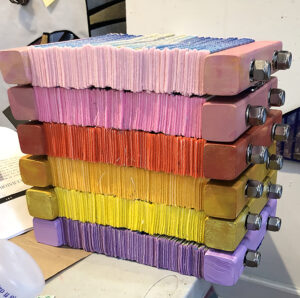
Chromatic Book Blocks Stacked, 2021. Photo by the artist. Color Interactions | Susan Hensel Projects
The Media Set-up
I chose three threads royal blue, gold ochre, and aqua. These are trilobal polyester embroidery threads. Their trilobal structure is what makes them especially exciting. They reflect and scatter light in multiple directions, at changing wavelengths. This means that each thread can cast a variety of shades and tints from a single thread. The relationships among the different threads and different felt backgrounds multiplies this effect. As you walk by each piece, the color seems to shift.
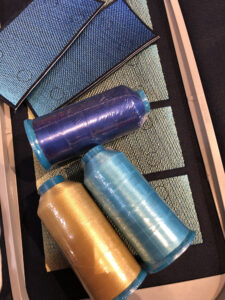
Thread, 2021. Photo by the artist.
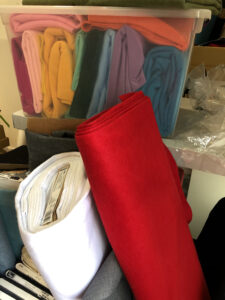
Felt for embroidery, 2021. Photo by the artist.
I am stitching on polyester felt on my smaller machine, a Brother 10-needle machine. Each stitch out makes 4 rectangles that must be trimmed, folded, ironed and drilled. That’s where I ran into problems! Here is where I discovered that my leather punches could not cut through the felt and thread. And my fine, sharp scissors would wear out my hands and forearm due to hundreds (thousands?) of hand-cut holes. Finally, a idea! A sailmaker’s drill is a perfect fit after learning how to keep it sharp.
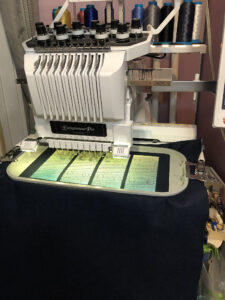
Machine embroidery, 2021. Photo by the artist.
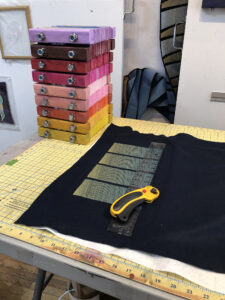
Cutting, 2021. Photo by the artist.
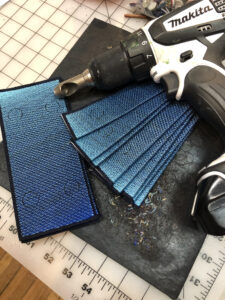
Fold and iron, 2021. Photo by the artist.
The Assembly
After about a week of stitching, I usually have enough pieces (72 folded & drilled rectangles) to begin assembly. To begin, I put the folded elements under pressure by a clamp so the fore-edges are well-defined. To accomplish this, I used threaded rods with split washers and locknuts. Each one put through 2×2 wood pieces. The wood pieces are painted to reflect and accommodate the color effect of the threads on the particular color felt. The paint jobs are rarely a single color. I used matt Flashe vinyl paint, which has a heavy pigment load. Then the painted wood is sealed and polished with Renaissance Wax.
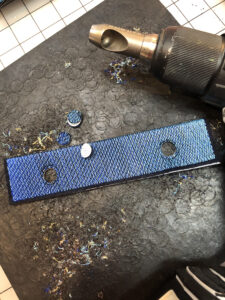
Drill, 2021. Photo by the artist.
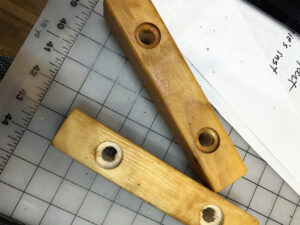
Woodworking end pieces, 2021. Photo by the artist.
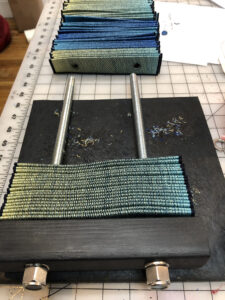
Assembly of Chromatic Bookblocks, 2021. Photo by the artist.
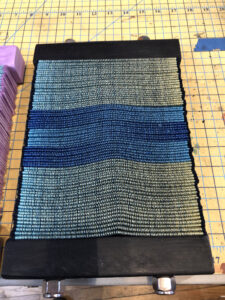
Finished module of Chromatic Bookblocks, 2021. Photo by the artist.
Today
I have, as of this writing. 16 modules, with nine colors to go. It continues to be an adventure. I am tempted to continue with three different colors of thread and see what happens next…


